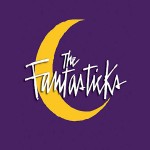 As the size (and cost) of Broadway productions began to grow in the 1950s, several theater-makers left Times Square and settled in Greenwich Village, fashioning intimate playhouses out of bars, brownstones, and abandoned cinemas. By 1954, the Off-Broadway movement had its first musical success: a revival of The Threepenny Opera, which ran for six years. This encouraged more musicals. The 1959-60 season alone saw a dozen, including what was to become the most successful Off-Broadway musical: The Fantasticks, which ran for a record-setting 42 years.
As the size (and cost) of Broadway productions began to grow in the 1950s, several theater-makers left Times Square and settled in Greenwich Village, fashioning intimate playhouses out of bars, brownstones, and abandoned cinemas. By 1954, the Off-Broadway movement had its first musical success: a revival of The Threepenny Opera, which ran for six years. This encouraged more musicals. The 1959-60 season alone saw a dozen, including what was to become the most successful Off-Broadway musical: The Fantasticks, which ran for a record-setting 42 years.
Based on Edmond Rostand’s Les Romanesques, the show centers around two neighboring fathers who trick their children into falling in love, by pretending to feud. In the adaptation’s first incarnation, called Joy Comes to Deadhorse, Tom Jones and composer John Donald Robb set the story on adjoining Southwestern ranches, where an Anglo boy and an Hispanic girl fall in love. Jones was not happy with this version and, with Robb’s assent, teamed with composer Harvey Schmidt to try again. The new piece, retitled The Fantasticks (the name of George Fleming’s 1900 translation of Rostand’s play), premiered on a bill of one-acts at Barnard College in summer 1959.
Producer Lore Noto saw that production and commissioned Jones and Schmidt to expand the musical into a full-length. The two-act version of The Fantasticks premiered a few months later, opening at the Sullivan Street Playhouse on May 3, 1960, with Kenneth Nelson and Rita Gardner as the children Matt and Luisa and Jerry Orbach as the narrator El Gallo.
Though expanded to two acts, the show remained trim. The cast comprised eight actors, the orchestra two musicians (piano and harp). The set was a small wooden platform with a bench, trunk, and cardboard moon hung on a pole. Word Baker’s stylized direction combined vaudeville showmanship with commedia dell’arte, reflected in Ed Wittstein’s set design that resembled a traveling pageant wagon, its raised platform anchored by six poles. Wittstein also designed the costumes, props, and lights! At a time when Broadway musicals cost cost $250,000, Noto spent $900 on the set and $541 on costumes.
Village Voice critic Michael Smith wrote, “I did something for the first time last week. Having seen the show free on Tuesday, its opening night, I bought tickets and went back on Thursday.” It took some nine weeks, but word of mouth spread, and as Smith had, audience members returned again and again to see the show, filling its 150-seat theater for the next four decades. Smith noted part of the reason: “The play’s thesis is that ‘without a hurt the heart is hollow,’ a dangerously romantic notion these days, and the most elaborate and sophisticated art is employed to catch the audience in its simplicity. … What are usually limitations off Broadway become advantages.”
A film adaptation was made in 1995, directed by Michael Ritchie, with Joey McIntyre (Matt), Jean Louisa Kelly (Luisa), and Jonathon Morris (El Gallo), but it wasn’t released until 2000 and spent only a few days in theaters. An abbreviated version of the show appeared on TV in 1964, with John Davidson (Matt), Susan Watson (Luisa), and Ricardo Montalban (El Gallo).
When the show ended its run on Sullivan St. in 2002, it had seen 17,162 performances, making it the world’s longest-running musical. Just four year later, the show was revived, closing in 2017 after another decade onstage and an additional run of 4,390 performances. That production starred Santino Fontana (Matt), Sara Jean Ford (Luisa), and Burke Moses (El Gallo), directed by Jones.
Highlights of the 1960 original cast album include “Try to Remember” and “Soon It’s Gonna Rain.” For more about the show’s creation, read Donald Farber’s The Amazing Story of The Fantasticks (2005).
NEXT, explore another Off-Broadway hit: Little Shop of Horrors (1982), with book and lyrics by Howard Ashman and music by Alan Menken. The original production ran for five years and 2,209 performances, making it the third-longest running Off-Broadway musical.
THEN, listen to the 1954 show that put Off-Broadway on the map: The Threepenny Opera, with book and lyrics by Bertolt Brecht (adapted and translated by Marc Blitzstein) and music by Kurt Weill, starring the incomparable Lotte Lenya, Weill’s wife.
